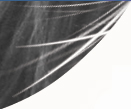USE OF THE STICK AND A TRAGIC DEATH
William Micklem
This blog is about a hugely important subject, the use of the short stick, often called a jumping whip. Recently I watched a young horse, ridden by a strong young man, stop at a fairly small fence. He re-presented, and as the horse left the ground he belted him very hard on the flank with his stick. In my opinion his timing was perfect...but his action could hardly have been less appropriate. His horse should have been rewarded at that precise moment but instead was punished for doing exactly what the rider required. Sadly such illogical punishment is not uncommon, and there are very real dangers of using the stick in his manner.
A TRAGIC ACCIDENT OR AN ACCIDENT WAITING TO HAPPEN
Last year I lost a friend in a cross-country riding accident. She was not one of my students but by coincidence I saw her ride her cross-country the week before her death. During this cross-country her stick was strongly active in front off and at the moment of take off to several of the fences. I believe this contributed to her fatal accident in a significant way, because subsequently when her horse stopped at a fence the following week he then jumped from a standstill in anticipation of punishment. As a result he got caught up in the fence and rolled over on top of her. The rules actually forbid you jumping fences from a standstill for just this reason.
WHEN TO USE THE STICK
As a young man I used the stick myself on the point of take off on countless ‘stopping’ horses that we were sent to ‘get going’, but I now understand that this is both illogical and dangerous. In addition it is also unacceptable to use the stick on the flank, which can so easily hurt a horse for many hours, rather than on the horse’s bottom, and it is also totally unacceptable to use the stick in anger.
In Europe the riders that use the stick most are jockeys, and quite rightly they are immediately banned for over use of the stick or using the stick in the wrong place. Most of the time they just wave the stick forwards and back in time with the stride and the majority recognise that too much use of the stick can produce a negative reaction the next time this horse comes to the end of a race. Similarly a horse that has been over punished at the wrong time then expects the use of the stick on approach to a jump, and as a result often refuses to face the fence, or even enter the arena. This is why I encourage any punishment after a refusal, which should initially be just a growl and a kick, going AWAY from the fence.
We also have to understand why a horse has stopped. If it is because they don't understand the forward aids or have not had a progressive introduction to jumping, then they certainly don't need punishment. If it is because the exercise is beyond their ability or the rider is getting left behind when jumping and pulling on the mouth, then they certainly don't need punishment. If it is because of nerves or being unable to see the fence properly because their head is locked into an unnatural position for jumping, then they certainly don't need punishment. If it is because they are in pain from their feet, badly fitting saddle, injury or ailment, then they certainly don't need punishment. If it is not for all these reasons then some limited punishment in the short term may be appropriate. However the most important reaction throughout training should be to REWARD the behaviour you want repeated.
DEVELOPING THEIR FIFTH LEG
It is now obvious to me that all riders should do as much as possible to do as little as possible in front of a fence, to allow the horse to concentrate on the fence and what has to be jumped instead of worrying about what the rider is doing. Most horses have a strong instinct for self preservation and will find a ‘fifth leg’ in times of difficulty, but only if they are allowed to do this and are not limited in these reactions by over riding. At best this over riding includes kicking at the moment of take off, which is a common bad habit and the cause of many knocked fences, and at worst it includes a horse becoming afraid of the rider because of over use of the stick.
In training if a horse is not responding to the forward leg aids we can put this right on the flat and then go back to the jumping, possibly making the jump exercise easier, with the rider staying quiet in front of the fence. Then the horse gets in the habit of going forward willingly but also taking responsibility for looking at and jumping the fence. In competition it may be occasionally necessary to use the stick to back up the forward aids, as long as the exercise is not a step too far for the horse, but it should never be used in anger and never at full strength. In particular as we use the stick we need to be as sure as possible that the horse builds in trust and confidence and not the reverse, as a frightened horse is a dangerous horse.
A SIMPLE PROGRESSION
For example fear often makes a horse 'runs blind' to fences and then safe jumping goes out of the window. The fundamental solution is to be a better trainer. As a rider you are a trainer, and as a trainer we all have a responsibility to be logical and humane in our approach and use exercises that are part of a simple progression to higher levels. At each stage the exercises should be achieved with ease before moving on. I can do no better than once again quote ledgendary German trainer Steinbrecht: "...all [training exercises] follow one another in such a way that the preceding exercise always constitutes a secure basis for the next one. Violations of this rule will always exert payment later on; not only by a triple loss of time but very frequently by resistances, which for a long time if not forever interfere with the relationship between horse and rider." The second sentence of this quote is of the greatest importance in relation to safe jumping.
OUR PUBLIC FACE
There is a final point about the use of the stick that is also very important...... generally speaking a non-horsey audience doesn't like it. If we are to enlarge our audience and increase our resources we have to win over those who equate any use of the stick with abuse. If in the process of doing this we train our horses better and have a zero tolerance to excessive or inappropriate use of the stick then it will be a win-win situation...and happy days for horse and rider. William
[ back to Articles ]
|


